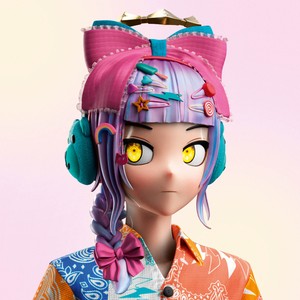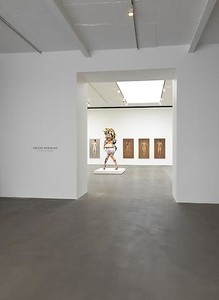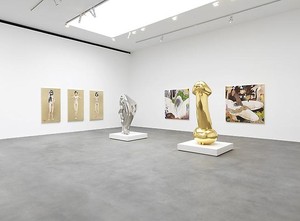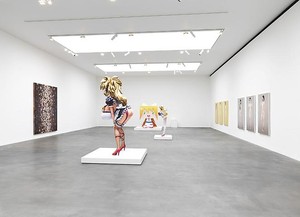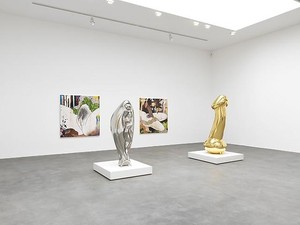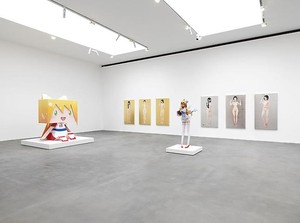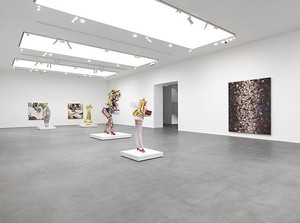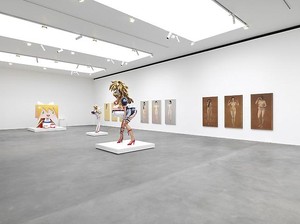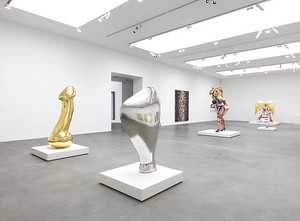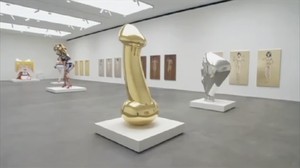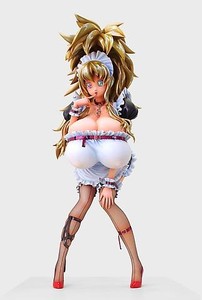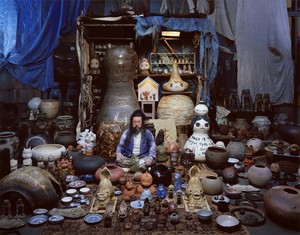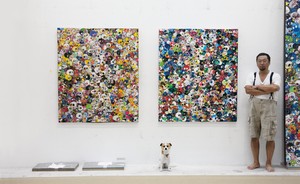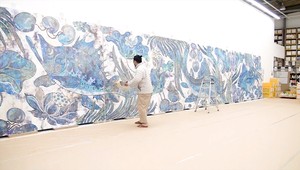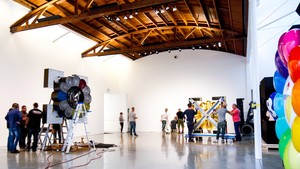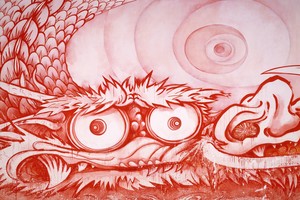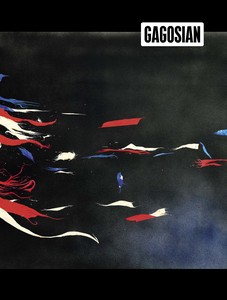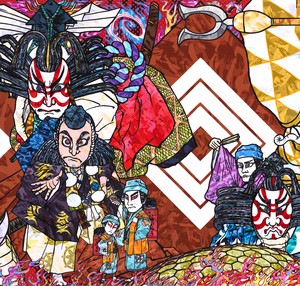I think the Japanese male sexual complex originated in the two-dimensional world—animation, games and so on—which then transferred to small three-dimensional sculptures. But before my sculptures Miss Ko (1997) and My Lonesome Cowboy (1998), it had never been represented life-size.
—Takashi Murakami
Gagosian is pleased to present recent paintings and sculptures by Takashi Murakami.
In his distinctive “Superflat” style, which employs highly refined, traditional Japanese painting techniques and formats to depict a charged mix of historical subject matter, Pop, anime, and otaku content within a flattened representational picture-plane, Murakami moves freely within an ever-expanding field of aesthetic issues and cultural inspirations. Parallel to his distinctive cartoonish formulations of utopian and dystopian themes, he has recollected and revitalized the religious and secular narratives of transcendence and enlightenment favored by the Japanese “eccentrics,” nonconformist artists from the Early Modern era commonly considered to be counterparts to the Western Romantic tradition. By situating himself within their legacy of bold and lively individualism in a manner that is entirely his own, he has revealed himself to be an artist in dialogue with history and very much of his time.
Murakami’s latest group of paintings explores his complex ambivalence to the legacy of cosmopolitan painter Kuroda Seiki, who brought yōga or Western-style painting to Meiji-period Japan. Kuroda broadly promoted the genre of history painting, as well as the validity of the nude figure as a subject for art. Murakami consciously reclaims Kuroda’s famous triptych, Wisdom, Impression, Sentiment (c. 1900), by applying traditional nihonga techniques like gold- and silver-leafing, as well as recasting the realistically rendered nude figures in contemporary manga style. When it was first shown, Kuroda’s work caused great controversy because of its content; however, as Murakami reminds us in paintings such as Shunga: Gibbons (2010) and Shunga: Bow Wow (2010), Japan had embraced explicit erotic content in art as early as the twelfth century. By the Edo period, the long-established genre of shunga sought to express a varied world of contemporary sexual possibilities often referred to as a “pornotopia,” an idealized, eroticized, and fantastical world parallel to contemporary urban life. In Murakami’s contemporary shunga, graphic depictions of exaggerated and engorged male and female genitals are set against delirious backgrounds of image and pattern.
This theme continues into sculptures, which feature collaborations with key artists working in Japan’s popular otaku culture, including Seiji Matsuyama—creator of the controversial manga My Wife is an Elementary School Student—and BOME, a figurative sculptor who previously collaborated on Murakami’s first life-size sculpture, Miss Ko2 (1997), an ebullient Playboy fantasy translated into manga cuteness and proportions. Whereas Nurse Ko2 (2011) relates closely to the earlier sculpture, with its leggy, busty verticality and sexy uniform (right down to a suggestively loaded syringe), 3-Meter Girl (2011) is an absurdist composition that pushes form and content to new extremes. She stands with feet spread wide, her abundant hair roiling around her like an elaborate rococo frame as if to steady her petite body against the whopping pendular breasts whose size and weight threaten to topple her. A highly polished cast metal penis of towering proportions, Mr Big Mushroom (2011) is a realist, man-made take on the traditional stone lingam. Together with Miss Clam (2011), an inviting metal vagina, it provides an exclamation mark to the enduring obsession with sexuality in contemporary human society.
